Rowling’s experience as a single mother influenced the depiction of strong, supportive families in the books. Characters like Hermione, who balances personal challenges and education, reflect Rowling’s own experience. The importance of chosen family, seen in Harry’s relationships with the Weasleys and others, also draws from Rowling’s personal life as a mother
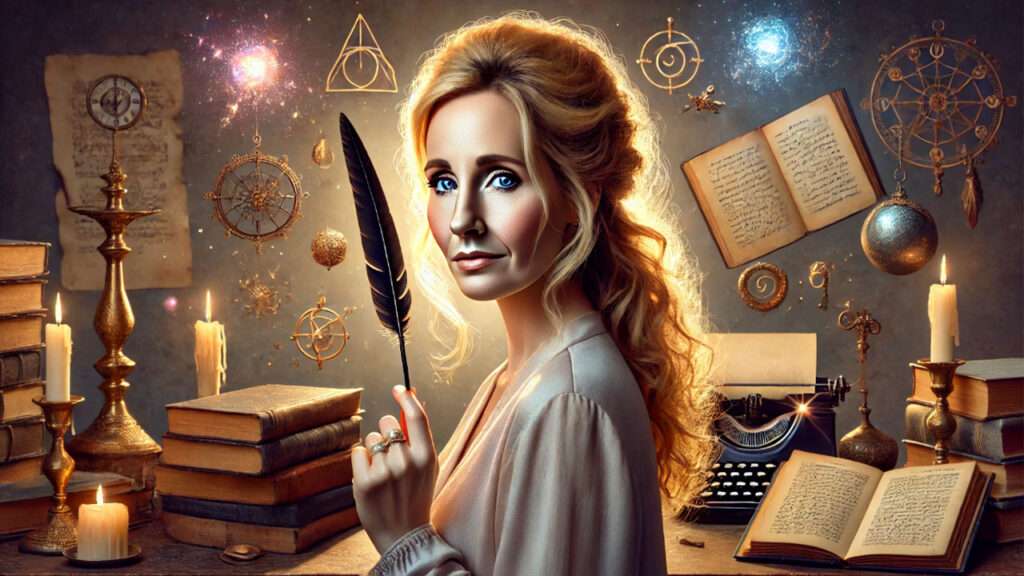
Unveiling J.K. Rowling’s Inspiration for Harry Potter: Discover the Real-Life Influences Behind the Magic
Have you ever wondered what inspired J.K. Rowling’s inspiration for Harry Potter of Harry Potter? 🧙♂️ From enchanted castles to wizarding schools, the beloved series has captured the imaginations of millions worldwide. But behind the fantasy, there’s a treasure trove of real-life influences that shaped the wizarding world we know and love today.
In this article, we’ll dive deep into J.K. Rowling’s inspiration for Harry Potter, uncovering the fascinating historical, cultural, and personal events that sparked her creativity. Whether you’re a long-time fan or new to the series, understanding these influences will offer fresh insight into the books, making them even more magical. Ready to discover the secrets behind the story? Keep reading! ✨
Table of Contents
ToggleThe Life of J.K. Rowling: A Foundation of Inspiration
J.K. Rowling’s life is a fascinating blend of challenges, triumphs, and deeply personal experiences. These elements not only shaped who she is today but also laid the foundation for the creation of the Harry Potter series. In this section, we’ll explore how her own life experiences played a pivotal role in the magical world of Hogwarts.
1. Overcoming Personal Struggles: A Theme in the Books
Rowling’s early life wasn’t easy. She faced numerous struggles, including the loss of her mother and battling depression. These challenges are reflected in the themes of Harry Potter, where characters frequently confront difficult personal situations and triumph over them. Harry, in particular, represents the resilience to overcome adversity, much like Rowling herself did in her life.
2. A Deep Connection to Family and Friendship
Rowling has often spoken about the importance of family and friendship in her own life, and these themes are clearly mirrored in Harry Potter. The close-knit group of friends Harry has at Hogwarts—Ron, Hermione, and others—echo the importance of having a strong support system through life’s ups and downs.
3. The Influence of Loss and Grief
A major source of inspiration in Harry Potter comes from Rowling’s experience with loss. Her mother passed away when she was only 25, a deeply painful experience that influenced the way she portrayed death in the series. In Harry Potter, death is a recurring theme, but it’s treated with respect and understanding. Characters like Harry, who lost his parents at a young age, navigate grief in powerful ways.
4. The Impact of Financial Struggles on Creativity
Before Harry Potter became the global phenomenon we know today, Rowling struggled financially. She was a single mother, living on welfare, and writing in cafes to make ends meet. This period of financial difficulty motivated her to write the story of a young boy who, despite his humble beginnings, would go on to achieve greatness.
5. Personal Beliefs: The Power of Choice
Rowling’s personal philosophy also shaped the themes in Harry Potter, particularly the idea that our choices define us. Much like her own belief in the power of personal responsibility, characters in the series, like Harry and Hermione, constantly make choices that impact their futures, for better or worse.
Historical Inspirations: Real Wizards, Mythical Creatures, and Ancient Lore
The Harry Potter series is filled with magical creatures, legendary wizards, and ancient lore that make the world feel rich and timeless. But where did J.K. Rowling draw inspiration for these elements? The answer lies in real-world history, mythology, and folklore. Let’s explore how these ancient stories and traditions shaped the magical world we know today.
1. The Legacy of Real Wizards: Historical Influences
Rowling didn’t just pull her wizards out of thin air—she was inspired by historical figures and legends of powerful magicians. One notable influence was Merlin, the legendary wizard from Arthurian legend. Merlin’s wisdom, magical powers, and connection to King Arthur can be seen in figures like Dumbledore, who is not only wise but also mentors Harry, much like Merlin did for Arthur.
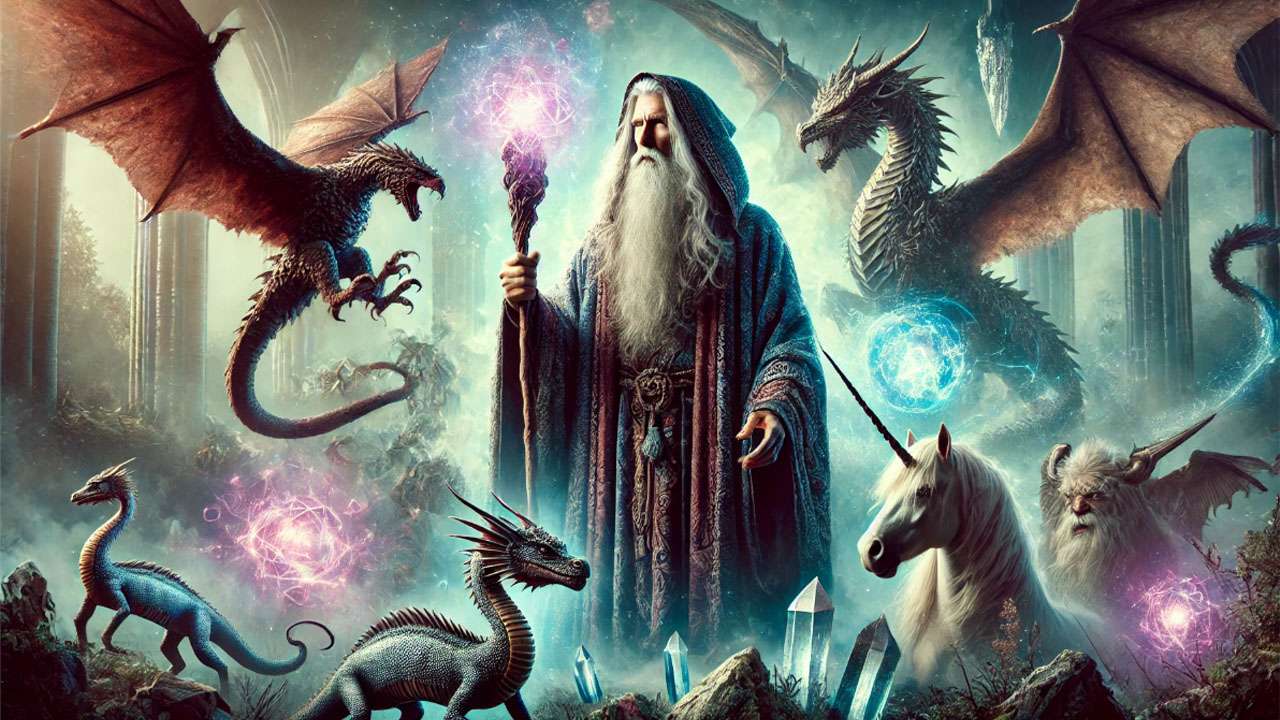
2. Mythical Creatures: From Dragons to Unicorns
Many of the magical creatures in Harry Potter are drawn directly from British folklore and ancient mythology. For example:
- Dragons have appeared in cultures around the world, symbolizing strength and danger. In Harry Potter, dragons are fierce, magical creatures that challenge wizards in many ways, such as in the Triwizard Tournament.
- Unicorns, known for their beauty and purity, are based on myths of these majestic beings with healing powers.
- The Basilisk, a serpent that can kill with its gaze, is inspired by legends of dangerous snakes from European and Middle Eastern folklore.
3. Ancient Lore and Magical Traditions
Magic in Harry Potter isn’t just random—it’s rooted in ancient traditions and beliefs. From the use of wands to the creation of potions, many magical practices were inspired by historical rituals:
- The concept of using wands to channel magical power is based on ancient traditions where wands or staffs were symbols of authority and power. In medieval times, they were often used by magicians, shamans, and priests to perform rituals.
- Potions and herbal magic also have deep roots in history. In ancient civilizations, potions were often crafted for healing or protection, and this idea is mirrored in the potions Harry and his friends brew at Hogwarts.
4. The Influence of Famous Magical Figures
Beyond Merlin, there are several other historical figures who influenced the Harry Potter universe. One such figure is Nostradamus, the famous astrologer and seer. In the Harry Potter series, characters like Sybill Trelawney, the Divination professor, are inspired by the mystical and prophetic role that figures like Nostradamus played in history.
5. The Intersection of Real and Magical Worlds
Rowling often blends elements from the real world with the magical world in a way that feels seamless. For example, the Philosopher’s Stone, which grants immortality, is inspired by real alchemical traditions. Alchemy was a centuries-old practice that sought to transform base metals into gold and discover the secret to eternal life. The Stone in Harry Potter reflects this quest for transformation and immortality.
The Role of Classical Literature and Myths
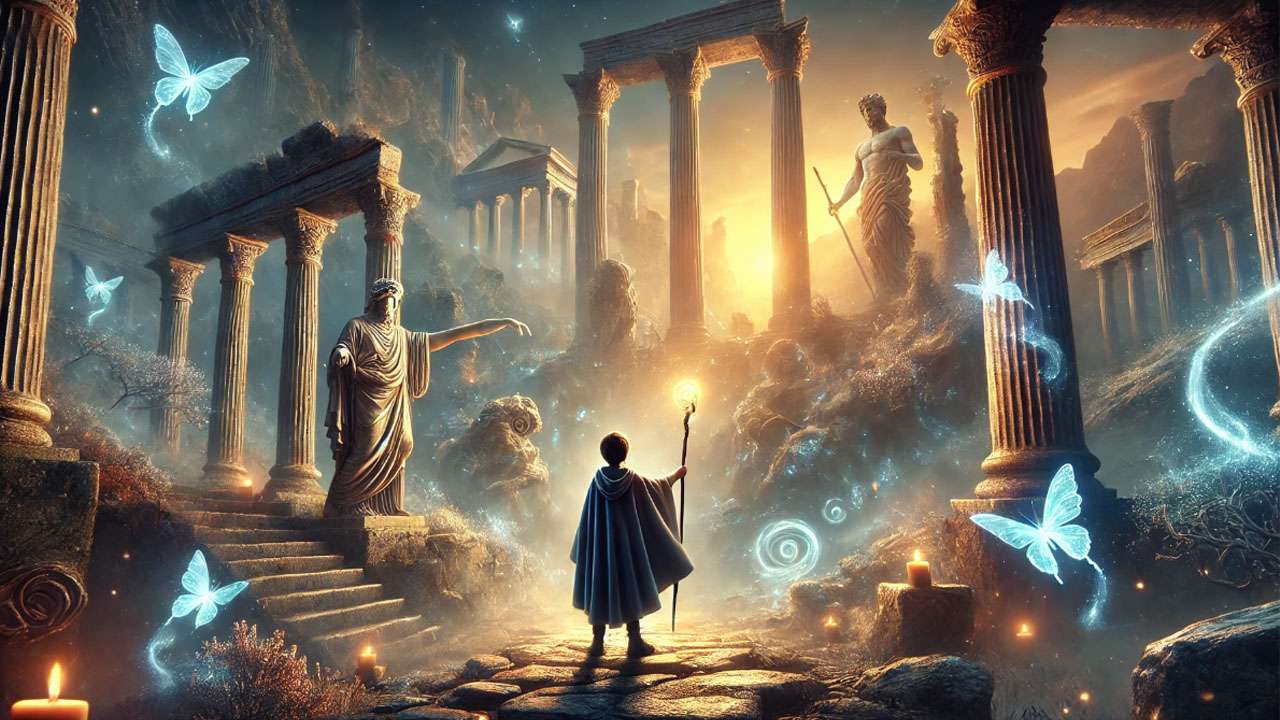
J.K. Rowling’s Harry Potter series is not only inspired by modern influences but also by timeless works of classical literature and mythology. Many of the characters, themes, and structures in the books mirror ancient myths and heroic tales. In this section, we’ll uncover the classical literary influences behind Harry Potter and explore how these ancient stories shaped the wizarding world.
1. The Hero’s Journey: A Timeless Template
One of the most significant influences on Harry Potter is the hero’s journey, a concept first popularized by mythologist Joseph Campbell. The hero’s journey is a storytelling framework that follows a protagonist through trials and transformation, which can be traced back to ancient myths like those of Hercules and Odysseus. In Harry Potter, we see Harry’s evolution from a seemingly ordinary boy to a hero who faces dark forces, learns profound truths, and ultimately brings balance to the world.
2. Greek and Roman Myths: Archetypes and Symbols
Rowling’s characters often draw from Greek and Roman mythology. For example, Harry, much like Perseus, is the child of prophecy who must confront evil and uncover hidden truths about his identity. Additionally, Hermione Granger shares similarities with the Greek goddess Athena, who is known for her wisdom, strategic thinking, and fierce loyalty. Hermione’s intelligence and resourcefulness are key to the trio’s success throughout the series.
- Voldemort himself is reminiscent of figures like Hades or Pluto, the god of the underworld. He is obsessed with immortality, seeking to conquer death and maintain control through fear and manipulation.
3. Shakespearean Influence: Power and Destiny
Another key classical influence in Harry Potter comes from the works of William Shakespeare, particularly his explorations of power, fate, and human nature. Characters like Voldemort and Dumbledore echo Shakespearean themes found in plays such as Macbeth and Hamlet. In Macbeth, for example, the obsession with power and the consequences of ambition resonate with Voldemort’s descent into darkness. Both characters believe that controlling their destiny is the path to ultimate strength, yet their actions lead to their downfall.
4. The Gods and Goddesses: Divine Influence in Harry Potter
Rowling also draws from the pantheon of gods and goddesses found in many ancient cultures. The Greek gods are especially present in the portrayal of magical creatures and characters. For example, the Greek god Ares, the god of war, can be linked to characters like Sirius Black, who is brave, rebellious, and fiercely protective of his friends. Similarly, Hermione’s role as the brain behind the trio’s success mirrors Athena’s role as the goddess of wisdom.
5. The Influence of the Tragic Hero
Rowling’s characters often reflect the idea of the tragic hero, a figure from classical literature who is brought down by a fatal flaw. Snape is a prime example, much like Oedipus or Hamlet, characters who struggle with their own inner demons and ultimately seek redemption. Snape’s complexity, driven by love, guilt, and sacrifice, mirrors the themes of tragedy found in many classic plays.
The Importance of British Culture and Education
J.K. Rowling’s Harry Potter series is steeped in British culture and traditions. From the schools to the customs, the magical world is a reflection of the deep-rooted values, history, and education systems of the United Kingdom. In this section, we’ll explore how British culture and education shaped Harry Potter and how understanding these influences can deepen our appreciation for the series.

1. British Schools and the Hogwarts Connection
The concept of Hogwarts School of Witchcraft and Wizardry is deeply influenced by the British boarding school tradition. In the UK, many children attend prestigious boarding schools, which often have long histories and rich traditions—just like Hogwarts. Rowling herself attended the University of Exeter, but her portrayal of Hogwarts draws from the imagery of iconic schools like Eton, Harrow, and Oxford.
At Hogwarts, students are sorted into four houses, which echoes the British school system where students are grouped based on academic ability, interests, or social circles. The idea of house competitions and traditions is also inspired by the camaraderie found in British school settings.
2. The Influence of British Class System and Society
One significant aspect of British culture reflected in Harry Potter is the class system. The characters in the series come from different social backgrounds, and this is explored through the interactions between Muggle-borns, pure-bloods, and the wizarding elite. The themes of blood purity and class distinctions in the wizarding world mirror real-world British class structures, where social status often determines opportunity and privilege.
- Harry Potter, born into an ordinary, working-class family, contrasts sharply with characters like Draco Malfoy, who comes from an aristocratic wizarding family.
- Hermione Granger, a Muggle-born, faces prejudice because of her non-magical heritage, reflecting the social struggles that come with being from a lower class in Britain.
3. British Traditions and Holidays
Rowling weaves British holidays and traditions into the fabric of the Harry Potter series, bringing authenticity to the magical world. For example:
- Christmas is a central part of Hogwarts life, with the Great Hall decorated for the holiday and students exchanging gifts. This reflects the significance of Christmas in British culture, where the holiday is often spent with family and friends.
- Bonfire Night (Guy Fawkes Night) is mentioned several times in the series, reminding readers of the British tradition of celebrating the failed gunpowder plot in 1605.
- Tea Time is another tradition reflected in the books, with characters like Professor McGonagall enjoying a cup of tea during important conversations.
4. The British Love for the Supernatural
The British have a long history of folklore and supernatural beliefs, and this is clearly evident in Harry Potter. From ghosts and poltergeists at Hogwarts to magical creatures like house-elves and centaurs, the supernatural is an integral part of British culture. The presence of these fantastical elements in the series mirrors the longstanding British fascination with myths, legends, and the unknown.
Practical Insight: Tapping into supernatural or fantastical themes can elevate your storytelling. Whether you’re writing, marketing, or creating a product, using elements of the mystical or unknown can captivate your audience and add an element of intrigue to your work.
5. British Humor and Wit
The distinctive British sense of humor—dry, sarcastic, and quick-witted—is prevalent throughout Harry Potter. Characters like Ron Weasley and Fred and George Weasley bring a lightheartedness to the series with their jokes, puns, and playful behavior. British humor often blends absurdity with subtlety, and this is reflected in the interactions between characters and the magical world itself.
The Influence of Social and Political Issues
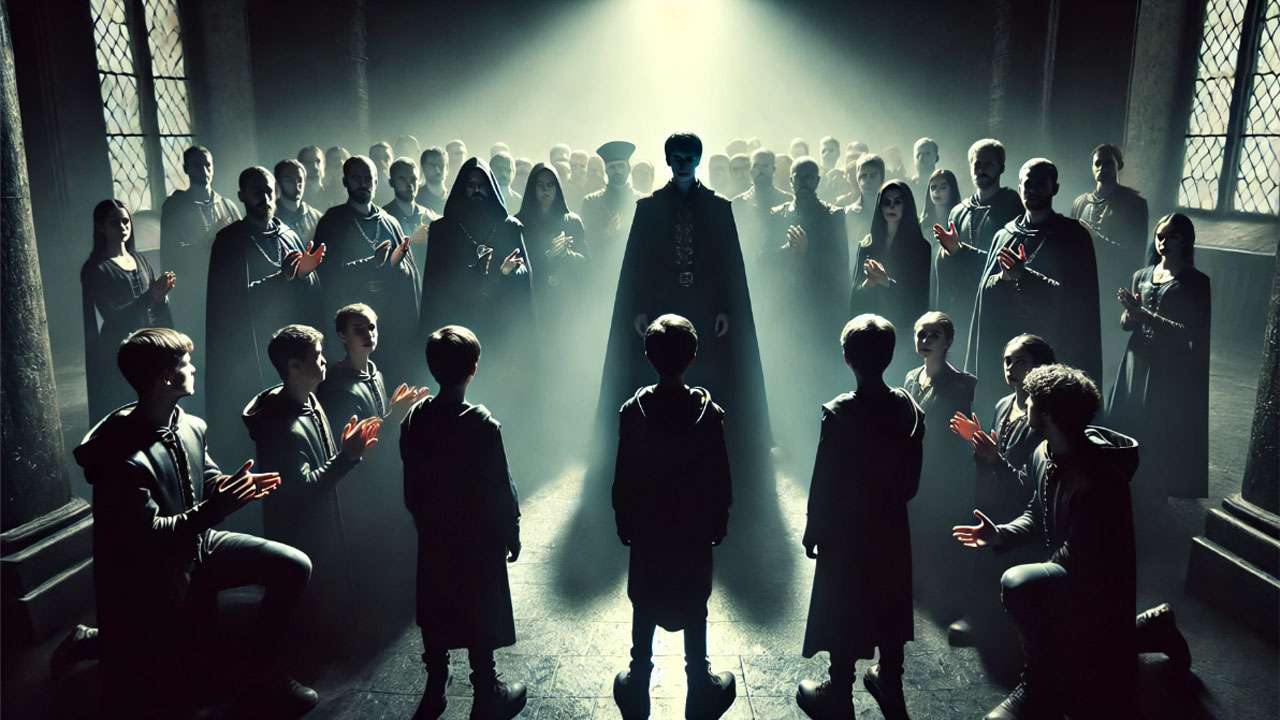
J.K. Rowling’s Harry Potter series is not just about magic and adventure; it’s also a reflection of the real-world social and political issues of the time. From themes of discrimination to the dangers of authoritarianism, Harry Potter offers a nuanced commentary on the power structures and societal challenges we face. In this section, we’ll explore how Rowling used the wizarding world to address important social and political issues.
1. Prejudice and Discrimination: A Mirror of Society
One of the central themes in Harry Potter is prejudice, particularly the discrimination faced by Muggle-borns (non-magical people born to magical parents). This mirrors real-world issues of racism, classism, and xenophobia. Characters like Hermione Granger, who is a Muggle-born, face prejudice from other witches and wizards, especially from characters like Draco Malfoy and his family, who believe in the superiority of pure-blood wizards.
Rowling directly addresses how harmful prejudices divide communities and how individuals, like Harry and Hermione, must rise above such division to foster unity and understanding.
2. The Dangers of Authoritarianism: Voldemort’s Rise to Power
Voldemort’s quest for control and his rise to power closely resemble the dangers of authoritarianism in our world. He seeks to dominate the wizarding world through fear, coercion, and manipulation, silencing anyone who opposes him. His regime is marked by the abuse of power, a lack of freedoms, and a culture of terror—much like the regimes in history that have sought to suppress dissent and control populations.
The Ministry of Magic, under Cornelius Fudge, initially downplays the threat Voldemort poses, reflecting how governments can be slow to act when faced with rising authoritarianism. As the series progresses, Harry and his friends push back against the Ministry’s corruption, drawing parallels to how citizens must resist oppressive systems in real life.
3. Corruption and Abuse of Power
The Ministry of Magic’s corrupt handling of the Triwizard Tournament and later, the Department of Mysteries, showcases how systems of power can become mired in self-interest and corruption. Characters like Dolores Umbridge, who abuses her power to control students at Hogwarts, represent the dangers of unchecked authority. Umbridge’s authoritarian behavior highlights how those in power can manipulate systems to maintain control, disregarding justice in the process.
The series illustrates how difficult it can be to challenge power structures, but also emphasizes the importance of resistance. Harry and his friends often take matters into their own hands to expose the truth, even when facing great personal risk..
4. The Power of Resistance and Standing Up for What’s Right
One of the most important lessons from Harry Potter is the power of resistance. Whether it’s standing up to bullies at school or opposing an unjust regime, the characters in the series show us how individuals can make a difference. Harry’s courage to defy Voldemort, even when facing impossible odds, highlights the importance of fighting for what’s right—even when it feels like the world is against you.
The Order of the Phoenix and Dumbledore’s Army are groups formed to resist oppression and defend the values of justice, freedom, and equality. Their actions remind us that even in the darkest of times, hope and determination can lead to change.
5. The Importance of Choice and Agency
In the Harry Potter series, the idea that choice shapes our destiny is a central theme. Characters like Harry, Hermione, and even Snape make decisions that affect not just their own lives, but the lives of others. The idea that we are defined by our choices, rather than our backgrounds, resonates deeply with real-world struggles for justice and equality.
Rowling emphasizes that even in the face of adversity, we always have the power to choose how we respond. It’s through these choices that we can stand up for justice, resist oppression, and make the world a better place.
Personal and Cultural Symbols in Harry Potter
J.K. Rowling’s Harry Potter series is filled with rich symbolism that resonates on both a personal and cultural level. From objects and creatures to magical artifacts and events, these symbols help shape the world of Hogwarts while adding depth and meaning to the story. In this section, we’ll explore some of the key personal and cultural symbols in the series and how they can offer valuable insights into both the magical and real world.
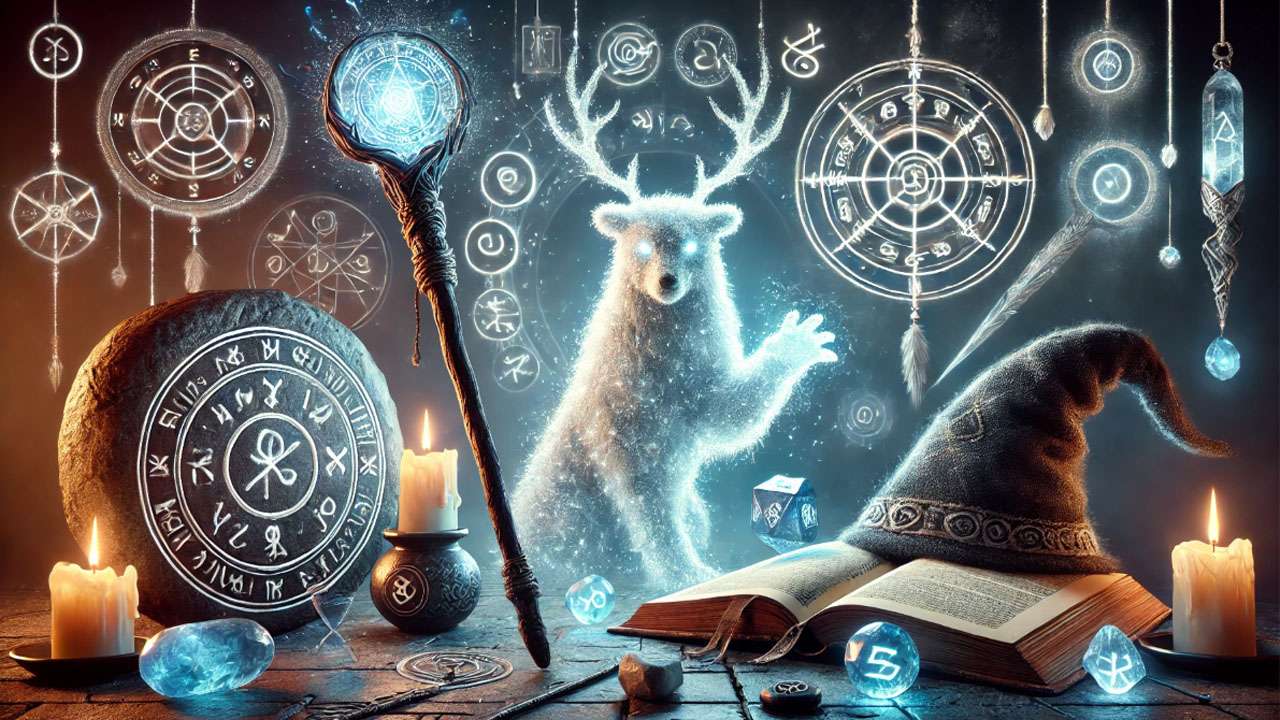
1. The Deathly Hallows: Symbolizing Power, Sacrifice, and Mortality
The Deathly Hallows—the Elder Wand, the Resurrection Stone, and the Invisibility Cloak—are among the most important symbols in Harry Potter. Each item represents a different aspect of life and death:
- The Elder Wand symbolizes power and the dangers of obsessing over dominance.
- The Resurrection Stone represents the desire to undo death, and the consequences of trying to control fate.
- The Invisibility Cloak symbolizes acceptance of mortality, reminding us that death is an inevitable part of life.
Together, the Hallows reflect the choices we face in life: to seek power, to dwell on the past, or to accept and embrace the natural course of life.
2. The Sorting Hat: Identity and Belonging
The Sorting Hat is a symbol of identity and belonging. When students at Hogwarts are sorted into one of the four houses, it reflects their values, strengths, and potential. But beyond this, the Sorting Hat reminds us that identity is not fixed. We have the power to choose who we want to be, just as Harry chooses his house despite being offered Slytherin.
This concept of self-determination is crucial, as it empowers both characters and readers to understand that our choices play a significant role in defining us.
3. The Marauder’s Map: Secrets and Discovery
The Marauder’s Map is not just a magical map; it is a symbol of hidden knowledge and the discovery of secrets. It allows its users to see what’s hidden in plain sight, much like how we often uncover truths in our own lives through exploration and curiosity. The map represents the value of exploration, learning, and the importance of seeing things from different perspectives.
4. The Phoenix: Renewal and Resurrection
The Phoenix, represented by Fawkes, Dumbledore’s loyal companion, is a symbol of renewal and resilience. The Phoenix is reborn from its ashes, symbolizing the ability to rise again after hardship. This powerful symbol reminds us that even after experiencing failure or loss, we can renew ourselves and begin again.
5. The Dark Mark: Fear and Control
The Dark Mark is a symbol of fear, control, and oppression. It is a mark of Voldemort’s followers, representing the reign of terror and the manipulation of others through fear. This symbol acts as a constant reminder of the destructive power that fear and oppression can have on individuals and communities.
6. The Lightning Bolt Scar: Identity and Sacrifice
Harry’s lightning bolt scar is one of the most iconic symbols in the series. It represents not only Harry’s survival of Voldemort’s curse but also his identity as the “Chosen One.” The scar serves as a constant reminder of Harry’s connection to the dark forces and his responsibility to confront them. It’s also a symbol of the sacrifice his parents made to protect him.
7. The Patronus: Hope and Protection
The Patronus is a deeply personal symbol of hope and protection. A Patronus is a magical creature conjured to ward off dark forces, representing the positive emotions that drive us—such as love, courage, and hope. Harry’s Patronus is a stag, symbolizing both his father’s protection and his own inner strength. Each character’s Patronus reflects their personality and their emotional state.
From Life to Literature: How J.K. Rowling’s Experiences Shaped the Wizarding World
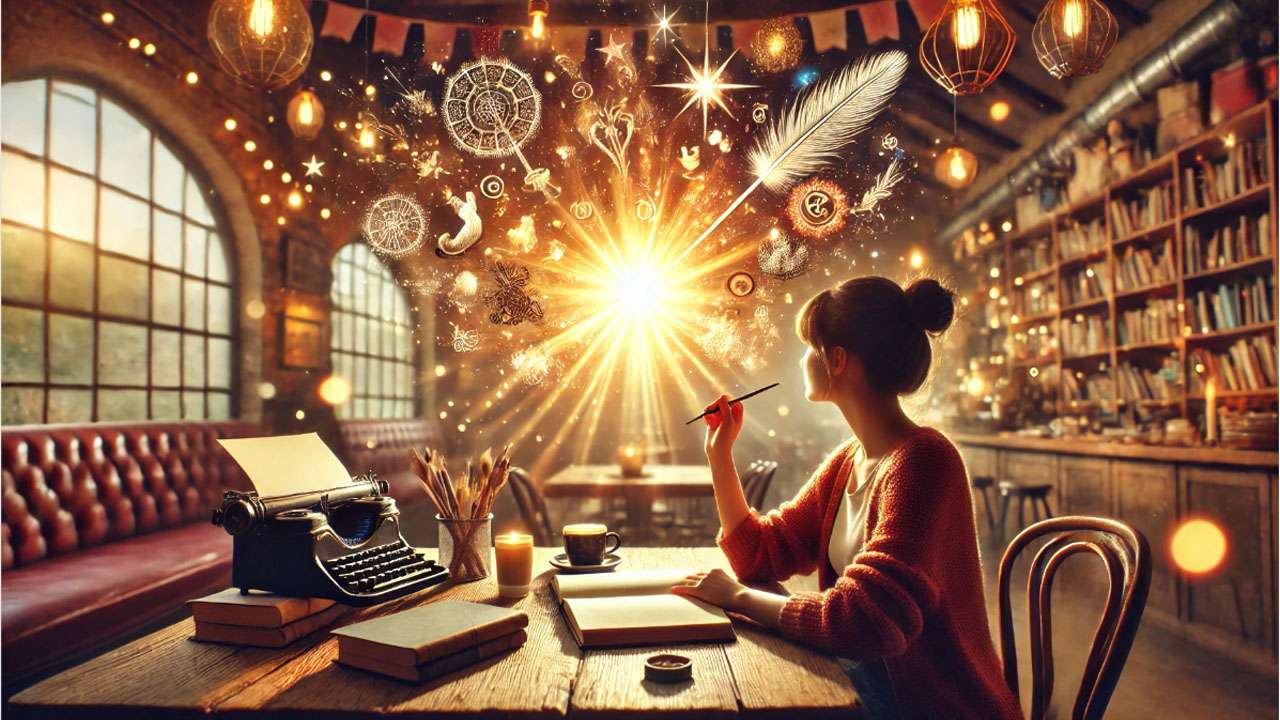
J.K. Rowling’s journey from struggling writer to worldwide sensation is a testament to how personal experiences can shape great literature. The Harry Potter series is not just a magical adventure—it’s deeply rooted in Rowling’s own life, challenges, and values. In this section, we’ll explore how the events and emotions of her personal life influenced the world of Harry Potter and what we can learn from her journey.
1. Overcoming Personal Struggles: Finding Strength in Adversity
Rowling’s life before Harry Potter was not easy. She faced poverty, the death of her mother, and personal struggles with mental health. These challenges heavily influenced the themes of the Harry Potter series, especially the ideas of overcoming adversity, finding hope, and persevering through hardship.
In the series, Harry’s life is marked by the loss of his parents and the constant struggle against dark forces. Much like Rowling, Harry learns that strength comes from within and that embracing your challenges can lead to personal growth.
2. The Role of Loss and Grief: Shaping Harry’s Journey
Rowling’s personal grief, particularly the death of her mother, is mirrored in the series through Harry’s loss of his parents. In fact, Harry’s emotional journey can be seen as a way to process and make sense of the pain that Rowling herself experienced. The themes of death, sacrifice, and love are central to the Harry Potter books, with characters constantly confronting the impact of loss and learning how to move forward.
The idea of living on in memory is also a major motif. Harry’s connection to his parents, especially through the memories and love they left behind, mirrors the way Rowling’s own mother continues to shape her life and work.
3. The Power of Education: A Reflection of Rowling’s Love for Learning
Rowling’s love for learning and education shines through in the magical world of Hogwarts. Much of her own life involved working in education, and she often speaks about the importance of books and knowledge in her own upbringing. Hogwarts, with its focus on studying magic, represents Rowling’s belief in the transformative power of learning.
In Harry Potter, education is the key to unlocking the wizarding world’s mysteries. Characters like Hermione Granger, who values knowledge above all else, reflect Rowling’s own reverence for intellectual curiosity.
4. The Impact of Being a Single Mother: Rowling’s Influence on Harry’s Story
Rowling wrote much of Harry Potter while raising her daughter as a single mother. Her experiences with single motherhood are reflected in characters like Hermione Granger, who faces her own challenges balancing school, work, and personal life. Additionally, Harry’s relationship with his surrogate parents, Ron Weasley’s family, mirrors Rowling’s own experiences of creating a “chosen family” while navigating life’s difficulties.
Through these characters, Rowling demonstrates that family is not just defined by blood—it can also be formed through shared love, sacrifice, and support.
5. The Influence of Mental Health Struggles: The Dark Forces Within
Rowling has openly discussed her struggles with depression and how it influenced the creation of characters like Dementors, the dark creatures that feed on despair. The Dementors are symbolic of depression itself—consuming hope and happiness, and leaving only despair in their wake. In Harry Potter, the battle against Dementors is not just a magical one; it’s also an emotional and psychological struggle.
6. Personal Beliefs and Values: The Importance of Choice
A key lesson in Harry Potter is that our choices define us, rather than our circumstances or origins. Rowling’s personal belief in the power of free will and moral responsibility is reflected throughout the series, particularly through characters like Harry and Severus Snape, who are constantly faced with difficult choices. Rowling herself has spoken about how important it was for her to create a world where characters’ actions were motivated by their personal choices rather than fate or destiny.
Unveiling the Magic Behind the Magic
J.K. Rowling’s Harry Potter series is more than just a fantastical tale about wizards and magic; it’s a reflection of the real-life experiences, challenges, and values that shaped the author’s world. From personal struggles with grief and mental health to her love for education and her belief in the power of choice, Rowling’s life is woven into every page of the wizarding world.
By understanding the real-life influences behind the magic, we gain a deeper appreciation for the themes of resilience, friendship, and hope that resonate with readers of all ages. Whether it’s the lessons learned through Harry’s journey or the symbols and cultural references that enrich the story, Harry Potter offers timeless insights that we can apply to our own lives.
✨ Final Thought: The true magic of Harry Potter isn’t just in the spells and potions—it’s in the way Rowling’s personal experiences shape the characters and lessons that continue to inspire millions around the world. Just like the magical world she created, we all have the power to transform our challenges into opportunities for growth, creativity, and change. The magic is real, and it starts with us. 🌟
Frequently Asked Questions (FAQs)
What inspired J.K. Rowling to create the Harry Potter series?
J.K. Rowling was inspired by her own experiences, including her struggles with mental health, loss, and personal adversity. Elements of British culture, folklore, and her love of classical literature also influenced the creation of the magical world. Her personal journey shaped the themes of resilience, friendship, and the importance of choice in the series.
How did J.K. Rowling’s childhood influence Harry Potter?
Rowling’s childhood played a key role in shaping the series. Her experiences with loss, as well as growing up in a small town, contributed to themes of isolation, overcoming challenges, and the importance of family. These themes are reflected in Harry’s journey from an orphan to a beloved figure who finds a sense of belonging at Hogwarts.
What historical influences shaped the world of Harry Potter?
Many elements of Harry Potter are inspired by British history and folklore. The use of magical creatures like dragons and unicorns, the concept of wizards’ education, and the house system all draw from real-life traditions. Additionally, historical figures like Merlin and ancient alchemical practices helped shape the magic system in the books.
How do personal struggles and mental health influence Harry Potter’s themes?
J.K. Rowling’s battle with depression directly influenced the creation of Dementors, the dark creatures in the series that represent despair and hopelessness. The series explores overcoming inner darkness and finding hope through resilience, mirroring Rowling’s own journey through mental health challenges.
What role does British culture play in Harry Potter?
British culture is deeply embedded in Harry Potter, from the traditional British school system that inspired Hogwarts to the social and political structures reflected in the wizarding world. The class system, customs like tea time, and historical references to British folklore are all key to creating the rich, immersive world of the series.
How does J.K. Rowling use mythology and classical literature in Harry Potter?
Harry Potter is filled with references to mythology and classical literature. Characters like Harry and Hermione are influenced by figures from Greek mythology, while themes of fate, power, and personal choices reflect the structure of the hero’s journey. Rowling draws heavily from mythological stories to build deeper meaning in the characters and plot.
Why are personal symbols like the Deathly Hallows so important in Harry Potter?
Symbols like the Deathly Hallows represent deeper themes of mortality, power, and sacrifice. Each symbol has a personal connection to the characters, reflecting key choices in their lives. These symbols help convey life lessons about love, death, and the importance of self-determination, making them central to the series’ message.
